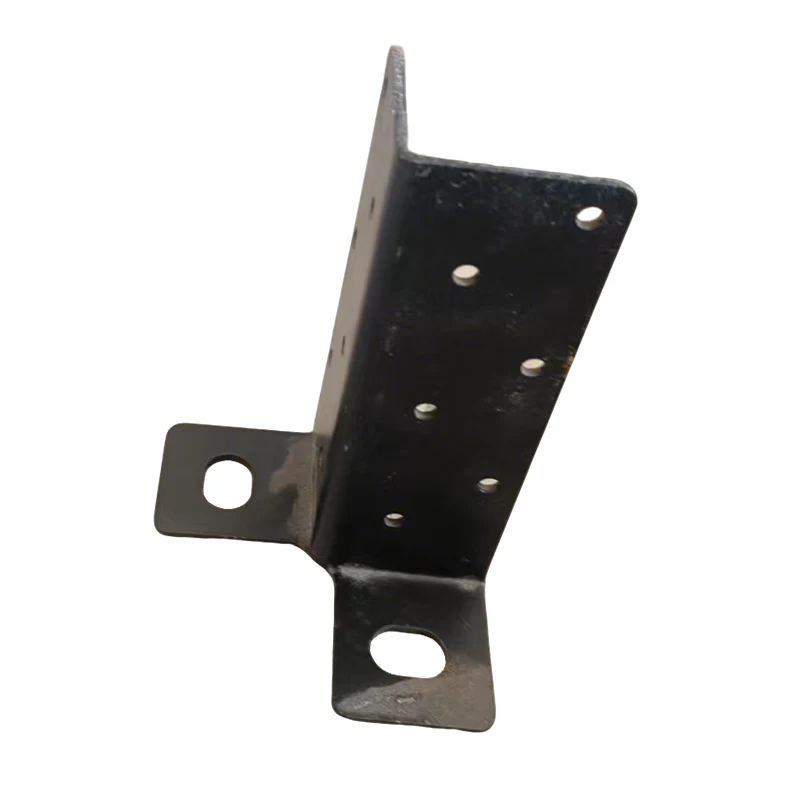Why Choosing the Right Angle Brackets Matters for DIY and Professional Projects
2025-11-19
When I work with customers who are building furniture, installing shelves, or reinforcing frameworks, one question always comes up—why do some structures stay firm for years while others loosen or tilt over time? From my experience in both DIY communities and professional contracting fields, the answer often comes down to one simple component: the Angle Bracket. In our daily work at S-SEN, we not only manufacture these brackets but also test them in real application environments, so we clearly understand how choosing the right model affects durability and safety.
What Makes Angle Brackets Perform Differently in Real Projects
I often notice customers assume all brackets are the same, but the performance difference can be huge. The material, thickness, surface treatment, and hole configuration directly determine load-bearing strength. When the wrong bracket is used, issues like wobbling, warping, or screw loosening almost always appear. That’s why I always recommend evaluating three things: stability, corrosion resistance, and compatibility.
Key Factors I Consider When Helping Clients Choose
-
Load-bearing requirements for the application
-
Wood, metal, or composite material compatibility
-
Indoor or outdoor environment exposure
-
Required installation flexibility
-
Long-term structural reliability
How Do Our S-SEN Angle Brackets Meet Professional Strength Requirements
Many customers come back to us because they can instantly feel the difference in rigidity after switching to our products. To give you a clear picture, here are the core specifications of our commonly supplied models.
S-SEN Angle Bracket Technical Parameters
| Specification Item | Value | Notes |
|---|---|---|
| Material | High-strength carbon steel / Stainless steel 304 | Suitable for indoor & outdoor installation |
| Thickness | 1.5 mm / 2.0 mm / 2.5 mm / 3.0 mm | Higher thickness equals better load capacity |
| Surface Treatment | Zinc-plated / Hot-dip galvanized / Powder-coated | Enhanced corrosion resistance |
| Angle Options | 90° standard / 45° special | Supports diverse project needs |
| Hole Size | 5 mm / 6 mm / 8 mm | Compatible with universal screw dimensions |
| Load Capacity | 50 kg – 300 kg (depending on model) | Tested under dynamic and static load conditions |
| Customization | Available | Shape, size, thickness, and packaging |
Why Do DIY Users Benefit From Stronger Angle Brackets
Many homeowners underestimate the force placed on simple home fixtures. Bookshelves, cabinets, garden frames—once fully loaded—apply far more pressure than expected. I’ve seen poorly supported shelves collapse simply because light-duty brackets were selected.
What I’ve Observed from Real DIY Cases
-
Heavier items cause bracket bending when thickness is insufficient
-
Poor-quality coatings rust quickly in humid rooms
-
Weak bracket holes deform when using larger screws
-
Misaligned structures cause long-term instability
Choosing reinforced Angle Brackets from the start saves cost, time, and repair work later.
How Do Professionals Maximize Efficiency with the Right Angle Bracket
For contractors and carpenters I work with, efficiency equals profit. They need brackets that install quickly, align perfectly, and reduce after-sale callbacks. That’s why our industrial clients favor S-SEN—because the accuracy of the holes, the smooth surface coating, and the consistency of every batch let them finish jobs faster.
Benefits Professionals Report After Switching to Our Brackets
-
Faster installation due to precise alignment
-
Fewer returns or structural complaints
-
Stronger stability for heavy-duty constructions
-
Better compatibility with electric tools and standard screws
Which Angle Bracket Style Should You Choose for Your Next Project
Here’s the simplified selection guide I use when advising customers:
-
For furniture assembly → 1.5–2.0 mm carbon-steel bracket
-
For outdoor structures → Hot-dip galvanized or stainless-steel bracket
-
For heavy-duty shelves and cabinets → 2.5–3.0 mm reinforced bracket
-
For decorative builds → Powder-coated colorful bracket
-
For special angles or tight spaces → Custom-fabricated S-SEN design
What Problems Can the Wrong Angle Bracket Cause Over Time
If you’ve ever wondered why a previously firm installation starts showing issues, these are the most common reasons I’ve seen:
-
Structural shaking caused by bracket bending
-
Rust weakening the metal and screw grip
-
Holes expanding due to mismatched screws
-
Bracket cracking under dynamic load
-
Wood or wall anchor damage from uneven stress distribution
Small components create big consequences—this is something I repeat to customers almost daily.
How Can You Ensure Your Project Is Safe, Durable, and Professionally Finished
In my 20 years of guiding customers and optimizing their construction results, I’ve noticed one consistent truth: using high-quality Angle Brackets is one of the simplest ways to dramatically increase project strength and lifespan. With S-SEN’s strict testing standards and customizable production, we make sure every bracket supports your work reliably.
If you’re planning a new build or upgrading an existing structure, I’m here to help. Contact us today, leave your inquiry, or reach out to our team for personalized recommendations—we’ll make sure you get the right Angle Bracket for your project.
